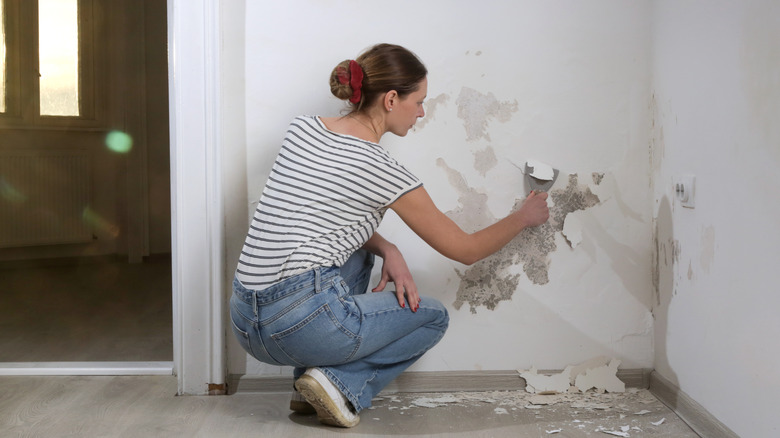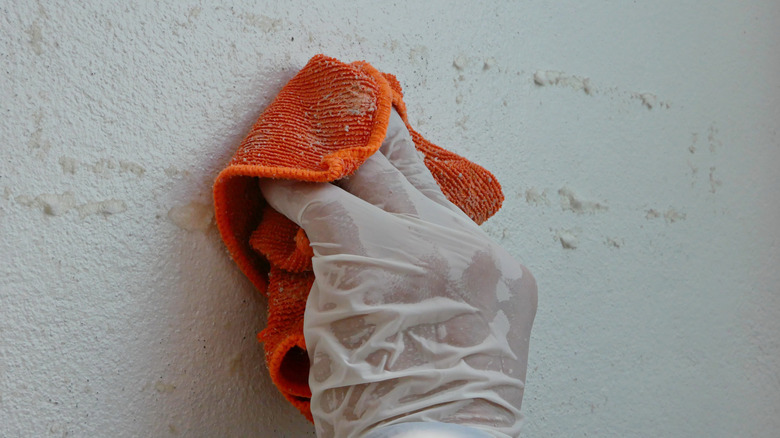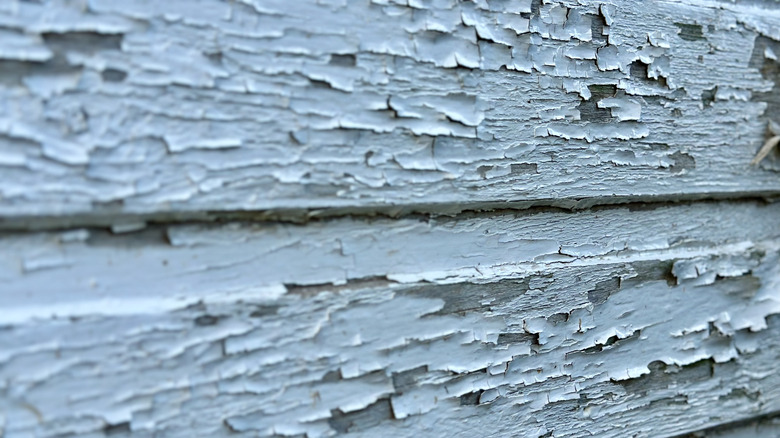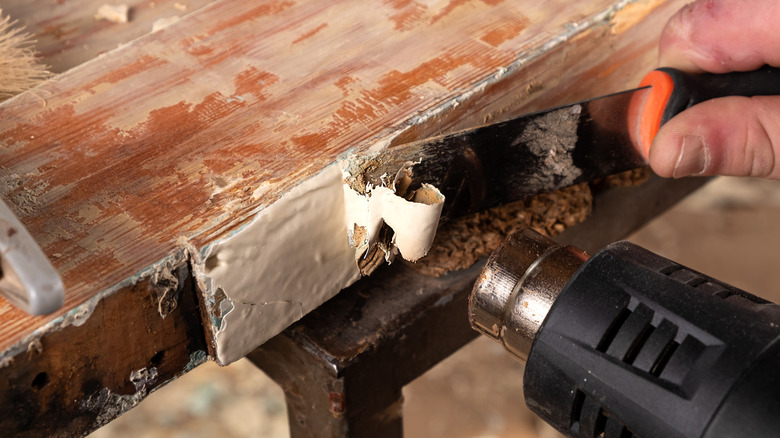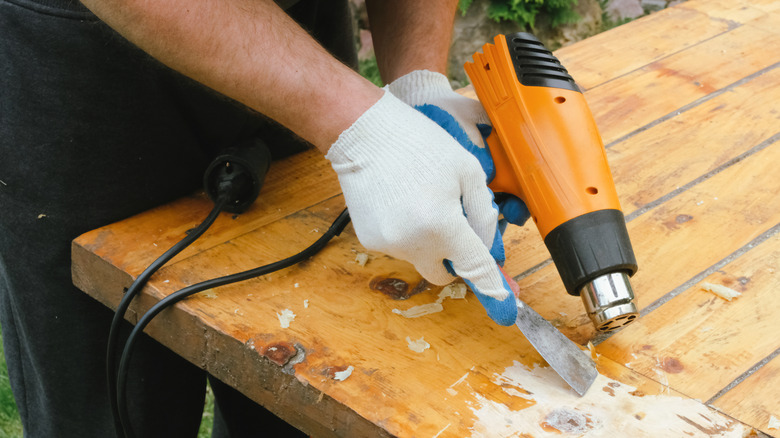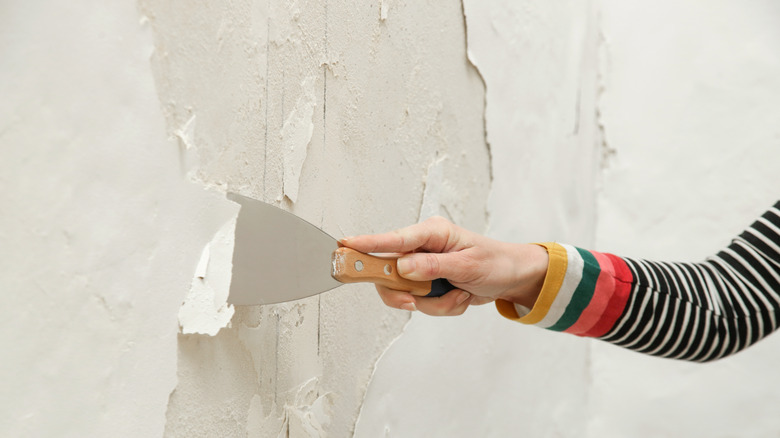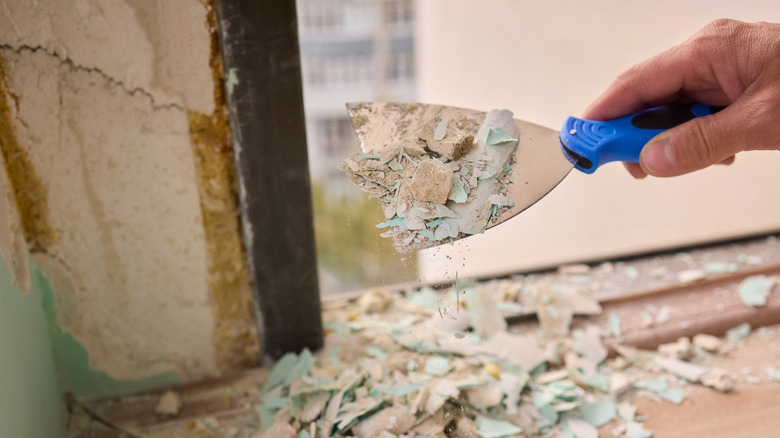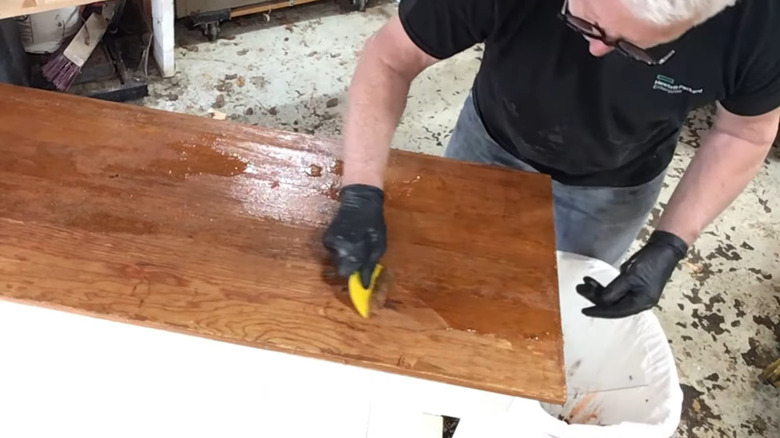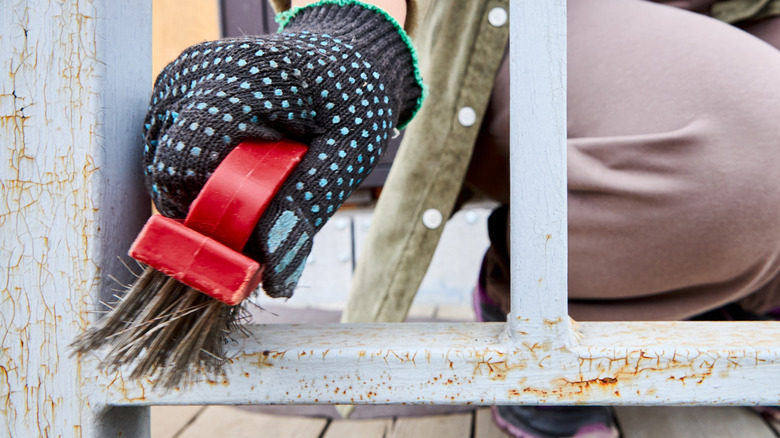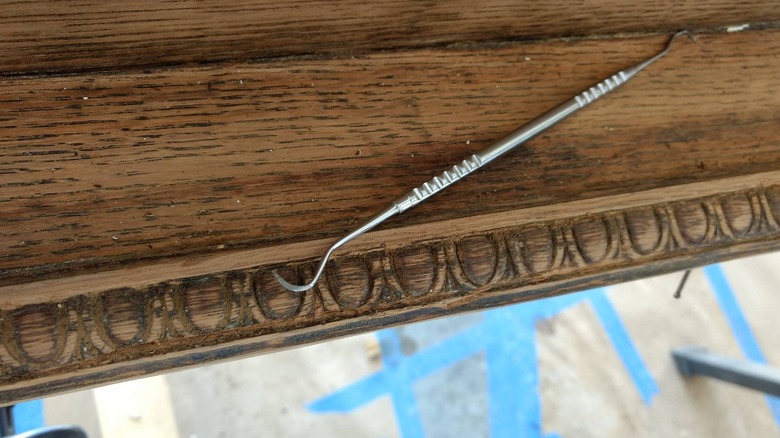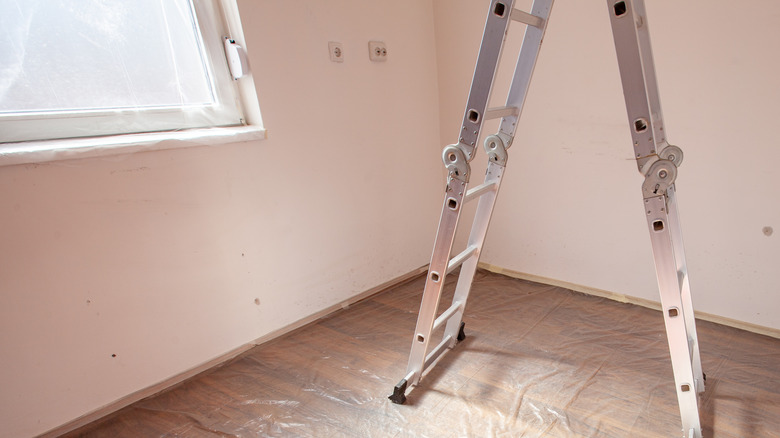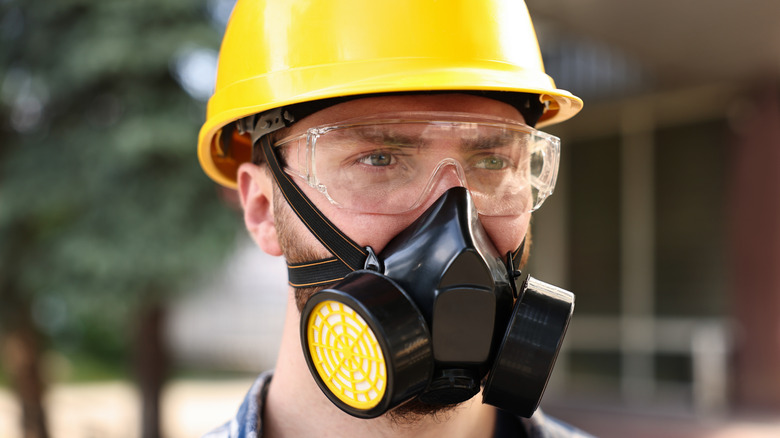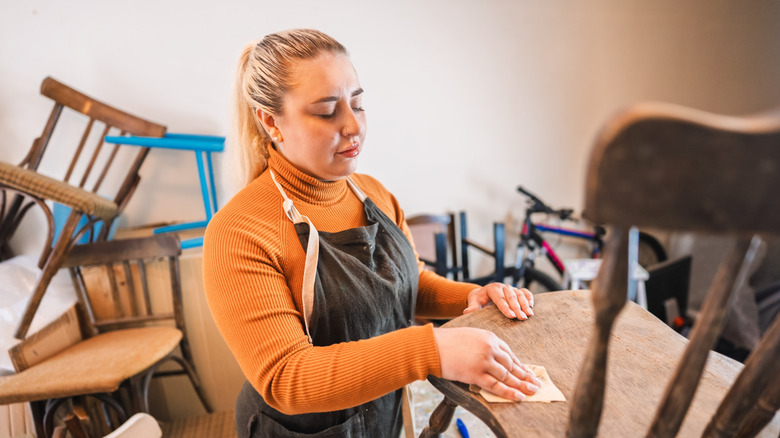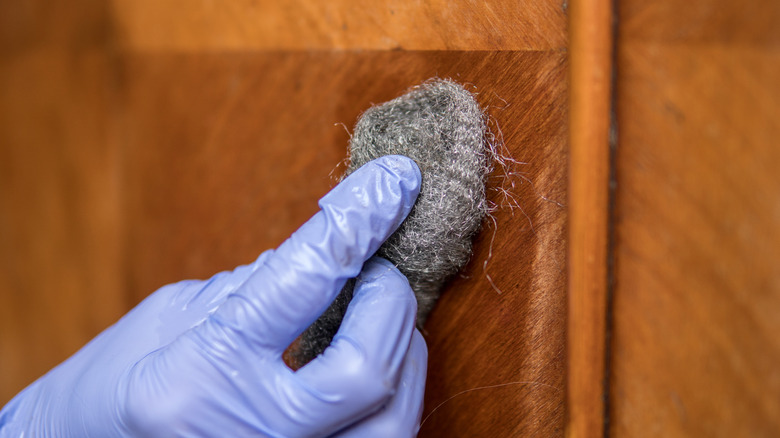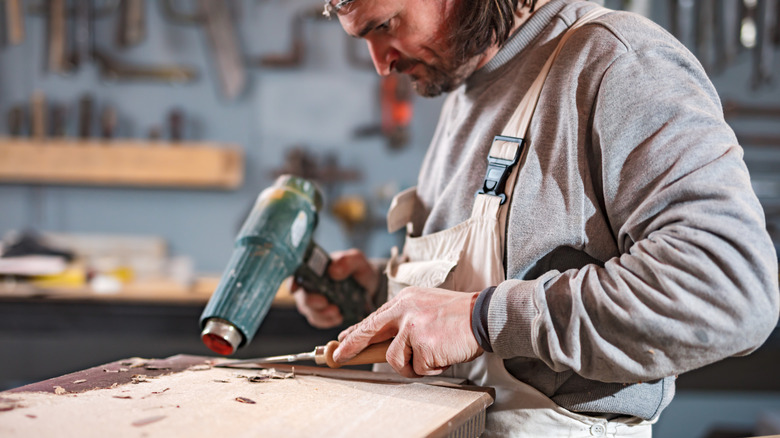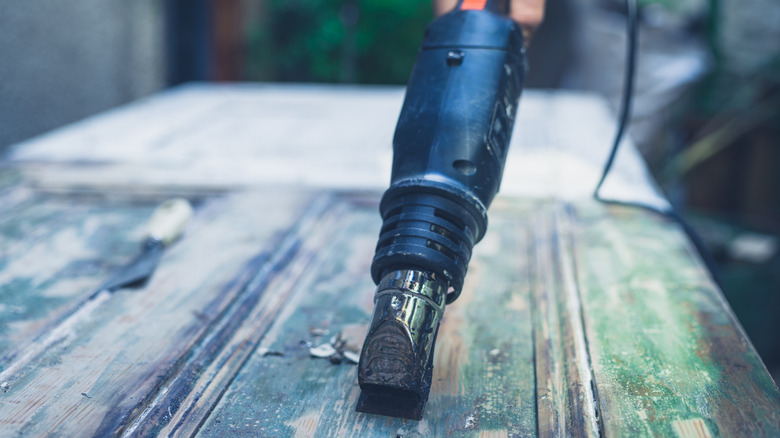Simple Tips That Make Stripping Paint A Breeze
We may receive a commission on purchases made from links.
A fresh coat of paint can enliven older homes and apartments, but you need to make sure your walls or furniture are ready for that first coat. You shouldn't just put a layer of paint down over a damaged paint job because the final product won't end up looking any better. For instance, the paint on bathroom walls often bubbles with humidity, and those flaws will still be visible even after an additional coat. You might also need to strip paint from wooden surfaces like doors or stair banisters if you want to restore them to their former glory.
Whatever your reason is for stripping paint, it's important to use the right tools. A heat gun will be your best friend, whether you're removing paint from your countertops, walls, or furniture. This SEEKONE Heat Gun produces hot air that can reach up to 1,200 degrees Fahrenheit. A little bit of warmth can loosen that paint so it comes off the surfaces easily. This process will still require a little bit of elbow grease, but it's very easy to get the hang of if you follow some simple advice.
Don't use paint thinner (if you can avoid it)
Using paint thinner heightens the risk of chemical burns and poisonous ingestion, so it's not a good idea to keep it around the house, especially if you have children. The effectiveness of paint thinner is also questionable. It often works on a single layer of paint, but old walls and antique furniture often have multiple layers. Additionally, modern paints and varnishes are engineered to hold up better against harsh conditions, which also allows many of these products to withstand the effects of thinner.
Check to make sure you're not removing lead paint
Lead-based paint is highly toxic. If your home or apartment is older than 1978, when lead-based paint was banned, you could find that some of the layers of paint you want to remove contain lead. Attempting to strip lead paint could pose serious health risks, so if you're unsure, consider hiring an inspector to make sure your house is lead-free before you begin your project.
Use your heat gun properly
Heat guns are the best tools for stripping paint quickly and effectively. You want to make sure you're using the right temperature, which is a minimum of 500 degrees Fahrenheit. The medium setting should do the job. Activate the heat gun about two inches from the spot where you want to remove paint. Allow the paint to bubble but not smoke. Once the paint has bubbled, you should be able to remove it easily with a scraper.
Find the right heat gun
The quality of your heat gun should depend on how much you plan to use it. If it's a quick job covering a small space, you can purchase a Seekone 1800W Heat Gun for about $40. If you plan to get a little more use out of their tool, consider how to choose the best Harbor Freight heat gun for your needs. Alternatively, the Milwaukee M18 BHG-0 Cordless Heat Gun receives high reviews for its quality, though a product like this may be a waste of money if you only intend to refurbish a chair.
Pick out the right scraper for the job
It's very easy to damage the surface with a scraper, and the last thing you want is scratched walls or doors. That's why it's important to pick out the right scraper for the job, especially if you're working on something nice, like a dining room table or a wardrobe. Most scrapers you see on the market are made out of metal, and these can dig into the wood quite easily. You can find plastic scrapers at hardware stores, which are a lot more forgiving and can cost less than $5.
Flatten the edge of your metal scraper
If you are determined to use a metal scraper, you can mitigate damage to wooden surfaces by flattening the edge. You do not want the edge to be too sharp, because a little bit of pressure can leave an indentation or even take a chunk out of the wood. File down the sharp edge of your scraper before use to make sure it is flat but dull.
Find a flat object to scrape the paint onto
Stripping paint ultimately results in clumps of paint needing to be disposed of. Having something you can scrape old paint onto while you work will minimize the cleanup once you're finished. A firm, flat surface, like the glass from a picture frame or a mirror, provides the ideal place to scrape old paint onto.
Use a nylon bristle brush to get rid of paint
You might have to work your way into a corner or a crevice to remove paint, and your scraper won't always fit; in this case, you can use a nylon bristle brush. Once the heat gun has loosened the paint, the stiff bristles of your brush should be able to reach into most nooks and crannies to scratch it away. While you're shopping for brushes, remember that some won't work because they are too large or oblong to fit into tight spaces.
Use a dental tool for very fine work
Some paint is so hard to reach that you'll need a pointed object to get at it. A dental tool will fit into the tightest corners or even the most intricate stamped surfaces. You can also use the pointed end of a pocket knife blade or a pair of scissors. Just make sure not to apply too much pressure because you don't want to leave an impression in the wood. One of the best ways to mitigate this type of damage is to use something made of wood, like a toothpick.
Cover the floor with a drop cloth for easy cleanup
Start by covering the floor with a drop cloth so you'll have an easier time cleaning up the mess as you go along.Use masking tape to secure the cloth to the floor, because you don't want the cloth to slide around while you are working. It's a good idea to keep a broom and dust pan on hand so you can clean up as you work and not have to worry about tracking paint chips all over the house.
Always use protective gear while stripping paint
You'll need a few safety items for this job. Make sure to use a respirator, safety goggles, and heat-resistant gloves. These precautions will protect you from unhealthy fumes and from burning yourself on the paint or heat gun. Knee pads might also help you reach lower spots and be able to work longer without becoming uncomfortable.
Use sandpaper to get rid of any stubborn paint
Your heat gun and scraper probably won't remove all of the paint and primer, so you should sand the wood afterward. It's best to use a detail sander or a belt sander with a dust collector. Sandpaper with a grit of 180 to 240 should do the job. This should also smooth down any nicks or scratches on the wood surface for an overall better finish.
Use steel wool to remove leftover paint
Sandpaper is probably going to take a bit of the wood off, which might not be desirable for surfaces with detailed carvings. Instead, you can use steel wool or a Brillo pad to get rid of some of the paint that's still hanging on. These options will be much kinder to the wood than sandpaper, and they will work whether you've been using a heat gun or paint thinner.
Take precautions to avoid starting a fire with your heat gun
Throughout the job, be aware of where you're setting your heat gun. Even if you're not pulling the trigger, the gun's metal nozzle can still be hot enough to melt plastic or set paper on fire. Most hardwood surfaces won't combust, but you also don't want to damage them. Leave the heat gun on a stone or tile surface to maintain safety.
Make sure the heat gun's air vents don't get clogged
Clogged air vents can cause your heat gun to malfunction. Ironically, heat guns don't work well when their mechanical parts overheat. That's why you need to remove sawdust and paint chips from the air vents throughout the job. You can use a microfiber cloth or tweezers to clean out those vents. Just make sure never to apply water to the heat gun while it's running. Once you've finished stripping paint, you could also use your heat gun for a kitchen cabinet transformation.
